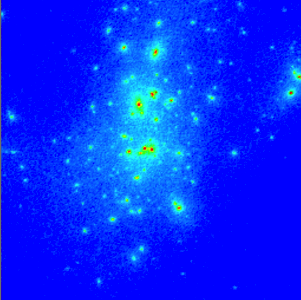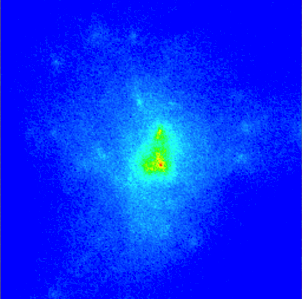A somewhat less discussed property of primordial magnetic fields is that they tend to enhance density perturbations in plasma. This is counter-intuitive because one would naively expect the magnetic fields to move charged particles in a circular fashion. Whereas, to grow density perturbations one would want the particles to move concentrically.
The above simple intuition is only true for uniformly distributed magnetic fields pointing in a single direction. We expect primordial magnetic fields to instead be stochastically distributed in arbitrary directions to maintain isotropy in the universe, i.e. there remains no preference for any single direction. For stochastically distributed magnetic fields, there can naturally be some points in the plasma where the force from the magnetic fields is in a concentric direction. So unless there is a strong thermal pressure applying a restoring force in the opposite direction, primordial magnetic fields act to enhance plasma density perturbations.
In the early universe, when the photons were tightly coupled with electrons, the thermal pressure in the plasma was quite significant and inhibited growth in density perturbations. However, on scales below the photon mean free path, the plasma was effectively decoupled from photons. Consequently magnetic fields could enhance density perturbations on small scales.
Unfortunately, unlike gravity, magnetic fields cannot increase density perturbations to arbitrarily large values even in the absence of thermal pressure. In parrticular, at recombination, the Reynolds number of the plasma becomes larger than one and the large plasma density perturbations induced by magnetic fields engender turbulence. As turbulence tends to indiscriminately mix the plasma, all plasma density perturbations below the scale of turbulence are erased.
In this paper, I showed that even though enhancement in plasma density perturbations are erased after recombination, they still leave an imprint of their existence in dark matter. This is because any enhancement in plasma density perturbations gravitationally sources enhancement in dark matter density perturbations. Moreover, the suppression of plasma density perturbations by turbulence is not transferred to dark matter. Thus, the enhancement in dark matter density perturbation survives even adfter recombination.
An enhanced dark matter perturbation means that we will have a clumpier distribution of dark matter today. To give an intuitive idea, below I show an image of a dark matter halo with (left) and without (right) an enhancement in dark matter density perturbations (Note, the image is not part of my work).
In the right panel, several minihalos of dark matter come together to form a bigger halo. Such a clumpy dark matter distribution has the possibility to be detected in future observations of pulsar timing array.
I find that the primordial magnetic fields with strengths as low as 10^-5 nG can enhance dark matter perturbations on small scales, assuming a well-motivated Batchelor spectrum for the magnetic field. Interestingly, this field strength coincides with the minimum strength of cosmic void magnetic fields required to explain several blazar observations. In other words, if the magnetic fields purportedly detected in the blazar observations are primordial and have a Batchelor spectrum, then such magnetic field should also produce dark matter minihalos.


